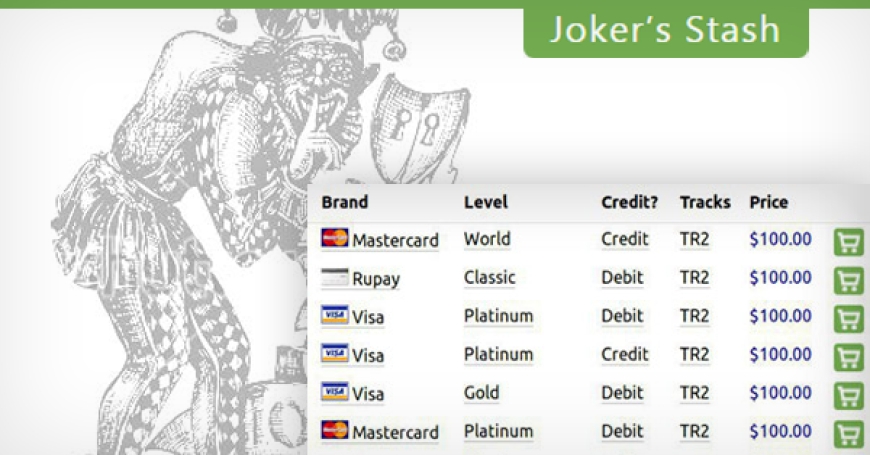Joker stash Marketplace - Latest Developments Traders Should Know
joker stash shutdown was a milestone in the fight against cybercrime, but it did not end the threat. Instead, it evolved the landscape

Introduction
Joker stash, also known as Jokers Stash, was once a dominant name in the cybercriminal underworld. It was the go-to dark web marketplace for buying and selling stolen credit card information, compromised account credentials, and personal data. For years, it operated with near impunity, generating over a billion dollars in estimated revenues. Despite its shutdown in 2021, the legacy of Joker stash continues to affect the cybersecurity landscape, especially for crypto traders and digital investors.
In this article, we explore the latest developments surrounding joker stash, from its takedown to ongoing risks, legal actions, and what every trader should be aware of to stay secure.
1. The Official Retirement of Joker stash
In February 2021, the operators of Joker stash announced their voluntary retirement from the dark web. Unlike many other marketplaces that are seized or dismantled by law enforcement, Joker stash exit was self-initiated. The admin claimed that the operation had been planned for some time and that they were exiting on their own terms.
Despite skepticism, the site did shut down shortly after the announcement. At the time, Joker stash was reportedly responsible for over $1 billion in total transactions involving stolen credit card and personal data.
2. Law Enforcement Takedowns and Legal Actions
While Joker stash retirement may have appeared voluntary, law enforcement had already begun targeting the infrastructure and key individuals behind the marketplace. Multiple U.S. and international law enforcement agencies were tracking transactions and cyber movements linked to Jokerstash.
One of the most notable actions came in 2022 when U.S. authorities indicted individuals suspected to be behind Joker stash. They charged them with conspiracy to commit bank fraud, money laundering, and trafficking in stolen data. Seized assets included crypto wallets, servers, and even private domains used to operate the site.
Authorities also recovered over $7 million in cryptocurrency tied to Jokerstashs operations. This marked a significant win in disrupting not only the site itself but its broader financial network.
3. The Rise of Alternative Dark Web Marketplaces
Even though Joker stash is gone, the demand for stolen data has not disappeared. In fact, its shutdown created a vacuum that new marketplaces quickly rushed to fill. Platforms such as Brians Club and Ferum emerged as prominent successors.
These platforms began offering similar carding services and quickly attracted many of Joker stash former users. Researchers have noted that the data listings, user interface, and even the security architecture of some of these newer marketplaces resemble Jokerstashs design, indicating either shared codebases or knowledge transfer between operators.
4. Shift to Privacy Coins and Decentralized Transactions
In the wake of Joker stash closure and increased law enforcement scrutiny, dark web marketplaces have started adopting more privacy-centric practices. Chief among them is the shift from Bitcoin to privacy coins like Monero and Zcash.
Bitcoin, while pseudo-anonymous, has a public ledger that can be traced with enough forensic effort. Monero, on the other hand, obfuscates both transaction amounts and wallet addresses, making it ideal for illicit transactions.
This shift makes it even harder for law enforcement to track stolen funds or identify bad actors. For traders, it also increases the difficulty of monitoring for threats, as traditional blockchain analysis tools often fail against these newer privacy currencies.
5. Ongoing Circulation of Leaked Data
Though Joker stash itself is no longer active, the stolen data it circulated is still being traded and used. Many traders who had accounts on exchanges like Binance or Gemini have found their personal dataincluding emails, passwords, and even wallet detailsappearing in newer breach collections.
The persistence of this data poses a real risk, especially for traders who havent changed their passwords or who reuse login credentials across platforms. SIM-swapping, phishing attacks, and unauthorized access attempts are often rooted in old data leaks.
Implications for Crypto Traders
The legacy of Joker stash offers several lessons for traders:
-
Past Breaches Still Matter Even years-old data can be used for identity theft or unauthorized access.
-
Data Circulation Continues Just because Joker stash is gone doesnt mean your data is safe. It may be circulating on successor marketplaces.
-
Anonymity Is Evolving Criminals now use privacy coins, making them harder to trace.
-
Law Enforcement is Catching Up But not fast enough to prevent every fraud.
-
Users Are the Final Line of Defense No platform can fully protect a trader who uses weak passwords or doesnt monitor for threats.
Security Tips for Traders
To protect yourself in the post-Joker stash era:
-
Enable App-Based 2FA: Use authenticator apps rather than SMS for more secure two-factor authentication.
-
Dont Reuse Passwords: Use unique passwords for each account and a password manager to store them securely.
-
Use Hardware Wallets: Store long-term crypto holdings offline.
-
Monitor Breach Databases: Tools like HaveIBeenPwned can notify you if your email or data has appeared in a breach.
-
Enable Withdrawal Whitelisting: Only allow withdrawals to approved wallet addresses.
-
Watch for Phishing Attempts: Never click on suspicious links, especially those that look like exchange login pages.
-
Stay Updated: Follow cybersecurity news related to crypto and your exchange.
Joker stash Influence on Platform Security
The fall of Joker stash acted as a wake-up call for crypto exchanges and wallet providers. Many have since invested heavily in security features such as:
-
Cold Storage for Assets
-
Real-Time Threat Detection Systems
-
User Education Campaigns on Cybersecurity
-
Insurance Against Theft
Major platforms like Coinbase, Binance, and Kraken have tightened their security protocols, implemented stronger verification methods, and increased transparency about data breaches.
Conclusion
Joker stash shutdown was a milestone in the fight against cybercrime, but it did not end the threat. Instead, it evolved the landscapepushing criminals toward new platforms, privacy-enhancing technologies, and smarter obfuscation tactics.
For traders, the takeaway is clear: cybersecurity must be proactive, not reactive. Even as platforms improve their defenses, personal diligence remains crucial. Treat every past breach as a potential present-day threat, and ensure your security practices reflect the dynamic and evolving risks of the crypto world.
The story of Joker stash serves as a warning. But if used wisely, it also offers a roadmap for becoming a more vigilant and secure trader in a high-risk digital environment.









































